
Transcending Polarity by Marianne Adams
ALL PRESENTATIONS WILL OCCUR FROM 11:30 AM – 12:30 PM
NICOLA KEALY
MINING FOR CLARITY: AN ARTS-BASED NARRATIVE INQUIRY INTO WOMEN IN IRELAND’S EXPERIENCE OF PERIMENOPAUSE
BIO
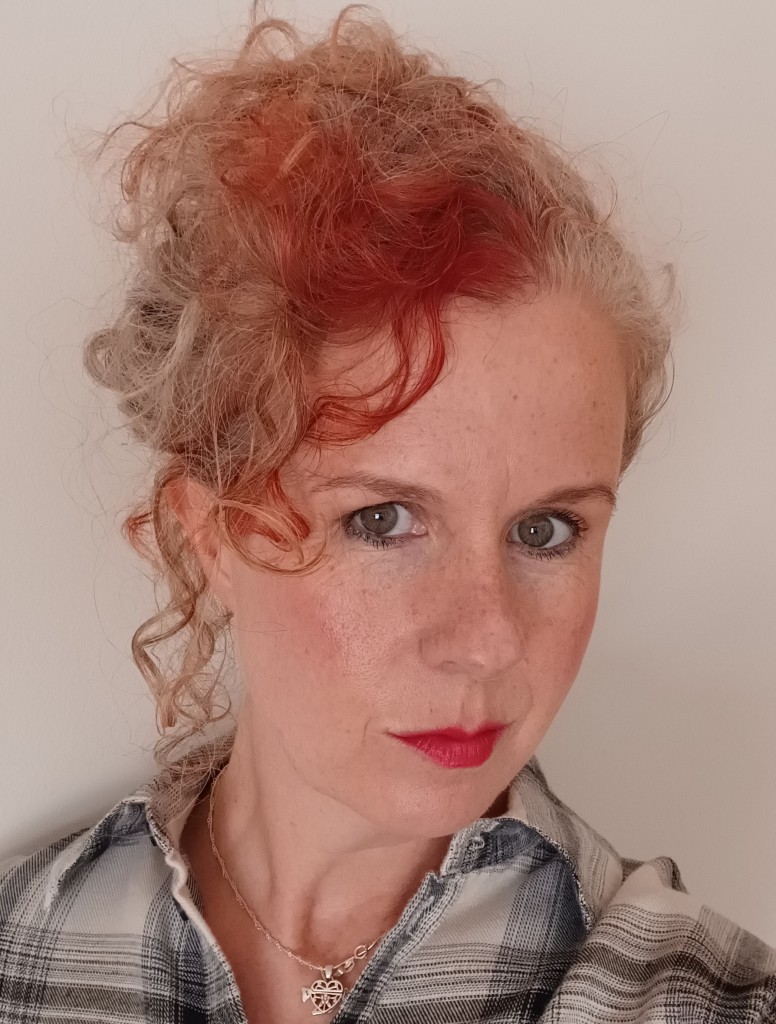

Nicola Kealy is the Artistic Director and co-founder of Rhythm Room, a process-based theatre training centre programme for Actors with an intellectual disability http://www.rhythmroomdublin.com
Nicola trained as an Actor at the Gaiety School of Acting and has an ALCM Dip In Drama from the London College of Music. In addition, she studied Community Dance and Choreography with the Laban Guild and has a Master’s in Dramatherapy.
Nicola has been working in Arts and Disability for the past twenty-three years. She has written, directed and produced numerous plays for Rhythm Room.
Nicola works as a Dramatherapist in private practice and with the children’s service CACTUS at First Fortnight. She is a guest lecturer in the School of Nursing, Psychotherapy and Community Health at DCU and the School of Education at Maynooth University. In addition, she teaches a module on inclusive creative practice for social care students with The Open Training College.
Nicola is researching women’s experiences of perimenopause as part of a doctorate in psychotherapy with Dublin City University.
PRESENTATION DESCRIPTION
This research study explores Women’s Perimenopause experiences to understand the transition into menopause. The inside researcher, a forty-eight-year-old woman, found that her experience of Perimenopause led her to wonder about other women’s experiences. Perimenopause is an under-researched area, and it is essential to improve awareness among health communities concerning the perceptions and needs of women in Perimenopause. The focus of this presentation will be on the research process and its relevance to my Dramatherapy practice.
LEARNING OUTCOME
The presentation is about developing awareness of the complexity of women’s presentation in clinical practice. I hope it will support clinicians in case formulation and subsequent treatment plans.
GERRY LEE

NEUROSCIENCE MADE SIMPLE: ART THERAPY AND A TRAUMA INFORMED CARE FRAMEWORK FOR SCHOOLS
BIO
Gerry Lee qualified with an MA in Art Therapy from CIT, Cork in 2010. Since qualifying Gerry has worked as an art therapist, in a number of clinical and community organisations in various countries, including; NPH in Haiti, CAMHS in Wales and NHS Psychiatric In-patient Services in England. Gerry currently works with children and young people in disadvantaged areas of Dublin. Gerry holds roles with School Completion Programme, Cabra and the Bright Programme, Ballymun. Gerry has lectured in various art therapy programmes; Dublin Principals of Art Therapy in Dublin, Art Therapy MA course in Cork and the Art Therapy Summer Programme in Cork. Gerry is a practicing visual artist, who enjoys being immersed in nature and cold bodies of water in his free time.
PRESENTATION DESCRIPTION
This is an introduction to the application of neuroscience within an art therapy group for children in a school environment. Neuroscience examines the structure and function of the human brain and nervous system and it has applications for art therapy and trauma informed practice. This presentation will review Polyvagal Theory and a Trauma Informed Care Framework for Schools utilising the principals of connect, protect, respect and redirect.
Questions to be explored as part of the presentation
Why is neuroscience important?
What are the benefits of neuroscience in informing art therapy practice?
What does neuroscience look like in an art therapy context?
What may the positive outcomes of using a neuroscience approach be?
LEARNING OUTCOMES
Understand the importance of neuroscience and how it may be applied to creative arts therapy practice.
To consider the benefits of using a neuroscience led approach and psycho-educational tools in therapeutic interventions.
HANNAH MCKIMM
METAPHOR AS A BRIDGE: UNITING ART THERAPY AND BRAINSPOTTING IN RELATIONAL TRAUMA WORK
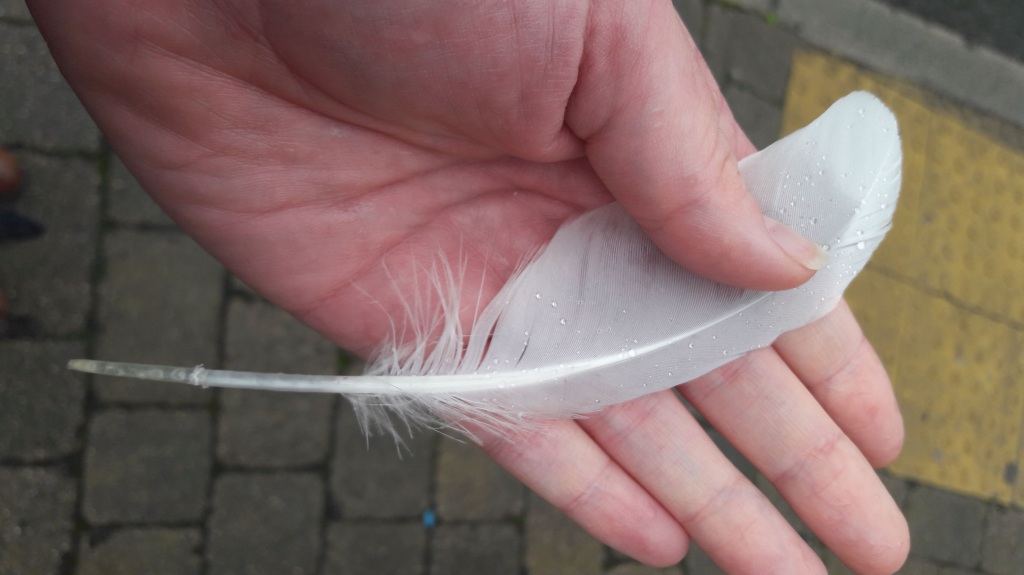
White Feather Photographed by Hanna McKimm, “A metaphor of hope and new beginnings. Released as part of an ending with a client.
BIO

Hannah, a Trauma Therapist, puts clients at the centre of their healing by employing
holistic and innovative techniques. Hannah is currently exploring the frontier of Art Psychotherapy and Brainspotting, an integrative approach offering a safe, effective and compassionate tool for clients to
explore and resolve the impact of trauma.
PRESENTATION DESCRIPTION
Metaphor: a thing regarded as representative or symbolic of something else. This presentation explores the integration of Art Therapy and Brainspotting, using metaphor as a fundamental tool in linking various parts of the client and enhancing the therapeutic ‘space between’ as tools to support healing from relational trauma. A case study will be used to illustrate these approaches and their efficacy.
LEARNING OUTCOMES
Understand the shared therapeutic grounds between art therapy and
Brainspotting.
Discover how Brainspotting can enhance and enrich the art therapy process.
Learn how metaphor can act as a connective element in trauma therapy.
Explores how the usage of metaphoric expressions can further extend the
clients’ insight into their trauma.
CLAIRE FLAHAVAN
“TIME LIVED WITHOUT ITS FLOW”: WORKING THERAPEUTICALLY WITH PREGNANCY LOSS
BIO
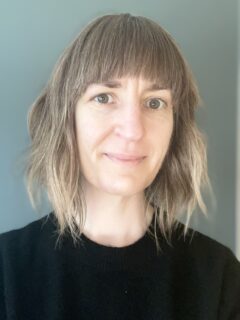
Claire Flahavan originally trained in medicine and psychiatry, working across a range of mental health services for over 10 years. She completed an MA in Art Therapy at Crawford College (Ireland) in 2013, and now works full-time as a therapist. Claire is based primarily at the National Maternity Hospital (Ireland), supporting women and couples after complex pregnancy loss. She also works at St Louise’s Unit, a therapeutic service for young people who have experienced sexual abuse and sexual violence.
PRESENTATION DESCRIPTION
This paper will explore the process of working therapeutically with pregnancy loss, specifically the ways in which these losses may be helpfully symbolised, articulated and represented via imagery, metaphor and words. It draws on the author’s experience as a therapist in perinatal settings over the last 10 years, and in particular her current role at the National Maternity Hospital with the Fetal Medicine Team.
LEARNING OUTCOMES
Describe the key features of pregnancy loss that differentiate this experience from other kinds of bereavement.
Offer reflections on the key tasks in therapeutic work in contexts of pregnancy loss.
Reflect on wider cultural issues that can shape the landscape within which a personal experience of pregnancy loss is navigated.
Explore the scope of the image-making process in this work.


Stitching Together (left) and Absence (right) by Claire Flahavan
MICHELLE DUNNE
WHEN WORDS ARE NOT POSSIBLE: HOW ART BECOMES ANOTHER LANGUAGE IN A MEDICAL SETTING
BIO

Michelle has a PG Dip Art Therapy (2001) from Crawford College of Art and Design and MA in Art Therapy (2008). Michelle has a Higher Diploma in Grief Therapy Counselling (Turning Point, Dublin) and the Advanced Diploma in Supervision (Middlesex University in the UK ). Michelle’s particular areas of experience include palliative care, grief, sexual abuse, eating disorders and mental health. She was a Senior Art Therapist in St. Clare’s Unit, Children’s University Hospital, Temple St, Dublin (2001-2016) and Senior Art Therapist in Our Lady’s Hospice and Care Service, Harold’s Cross, Dublin from (2002-2022). She was also a Visiting Lecturer on the Art Therapy MA course at Crawford College of Art and Design for 11 years, Social Care course at Dublin Institute of Technology for 3 years and on the Principles of Art Therapy Certificate (Children Therapy Centre) for 9 years.
PRESENTATION DESCRIPTION
How the art therapy process helped two terminally ill patients who were frustrated that they could not verbally voice what they wanted to communicate. Working in imagery enabled both to get their message across.
Michelle will present two case studies:
Case Study One
A 62 year old man with Motor Neuron Disease:
He could not speak and he had limited movement with his hands. To communicate, he texted using his mobile phone. He was confined to a wheelchair.
He was referred for art therapy in the hope that it would help him to communicate using art. I will outline in his Case Study, how art therapy enabled him to visually communicate his words with the medical staff.
This man was able to show how he felt safe, unsafe and safe again with the help of art therapy.
Case Study Two
A 47-year-old lady having advanced terminal thyroid cancer with Brain, Bone and Lung Metastases. She was initially referred for art therapy so that she might have something to do!
On my first encounter with this lady, she was not making sense to me. Her words were jumbled.
Within a few weeks, I felt that there was something special about this lady’s art work.
Her imagery was making sense and she was really enjoying the process. With the help of her imagery, she started to and to make sense of things. Her sister helped her with the connections, leaving her able to communicate and even to make decisions.
LEARNING OUTCOME
Art therapy making stimulates the brain, and is discovering new frontiers for the use of imagery and art expression in treatment. Art therapy can be used to treat emotional and physical disorders. Art therapy and neuroscience may benefit from greater collaboration.
KATIE FITZPATRICK
SETTING UP A MUSIC THERAPY SERVICE FOR PAIN MANAGEMENT IN THE UNIVERSITY OF LIMERICK HOSPITALS GROUP
BIO
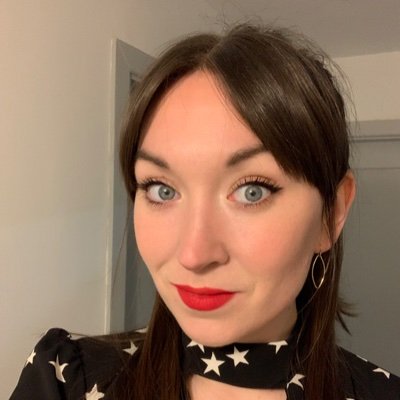
Katie Fitzpatrick, Podcast Interview
https://shows.acast.com/embracetherapy/episodes/katie-fitzpatrick
Managing Pain and Trauma with Music Facebook Interview
https://www.facebook.com/watch/?v=609479560056679
Dr Katie Fitzpatrick is the Senior Music Therapist at the University of Limerick Hospitials Group Pain Management Service in Limerick and recently completed her PhD research on music therapy for chronic pain at the University of Limerick. She co-chairs the international special interest group on music therapy and chronic pain with Professor Hilary Moss. Katie also provides guest lectures and supervision to trainee music therapists, and works with TUSLA delivering music therapy for children and young people.
PRESENTATION DESCRIPTION
This presentation will detail the development of a new music therapy service at the Pain Management Centre at Croom Hospital (UL Hospitals Group) in Limerick. The music therapist works as part of the larger MDT and music therapy is delivered to adult outpatients dealing with low mood, stress, trauma and suffering related to pain on an individual basis. The service has a focus on resourcing people to self-manage persistent pain, and this includes delivering regular pain education with the multidisclinpinary team.
LEARNING OUTCOMES
Attendees will learn about the music therapy approach for working with chronic pain including the need for a trauma informed practice.
The challenges encountered in setting up a hospital based outpatient service.
Integration in the multidisciplinary team.
Examples from sessions with adults living with chronic pain.
MARIANNE ADAMS
REVISIONING THE TRIANGLE: THERAPEUTIC PRESENCE AND ATTUNEMENT
BIO
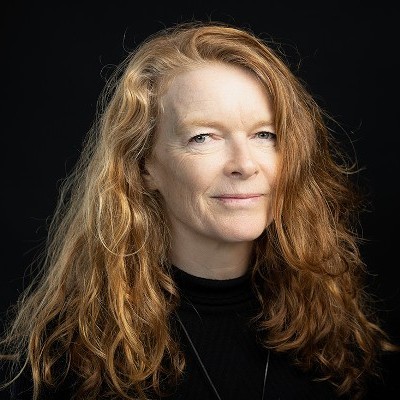
Marianne Adams is a Senior Art Therapist and one of the teaching team on the Art Therapy MA training at Crawford College of Art and Design, Munster Technological University, The Principles of Art Therapy and Coordinator of the Art Therapy Summer School. Marianne has been published and lectured both here and internationally.
For more information: https://www.arttherapywestcork.com/2018/04/welcome.html
PRESENTATION DESCRIPTION
Marianne will continue to develop a paradigm which attempts to language and track the fundamental ingredients of therapeutic presence. She will layer Joy Schaverien’s idea of the Triangular Relationship, Iain McGilchrist’s studious insights into the differing nature of the right and left cerebral hemispheres, and Jung’s esoteric idea of the Transcendent Function. The model she is proposing will help us become more conscious of our own presence and how we can attune more fruitfully to ourselves and our clients.
LEARNING OUTCOMES
Developing a sensitivity and discernment in relation to our therapeutic presence.
Understanding and exploring how we can invest in our therapeutic presence.
Developing a capacity to understand the impact of our presence on the therapeutic dynamic.
REBECCA O’CONNOR, LOUISE QUINN, DEE GRAY AND SHANE CASSIDY
UTILISING A QUALITY IMPROVEMENT FRAMEWORK AND EXTENSIVE RESEARCH STUDIES TO DEVELOP AN INTEGRATED CREATIVE ART THERAPY SERVICE WITHIN A SPECIALIST REHABILITATION INTERDISCIPLINARY PROGRAMME AT THE NATIONAL REHABILITATION HOSPITAL DUBLIN
BIOS
REBECCA O’CONNOR
Rebecca qualified and worked as a nurse before training as a music therapist and has 32 years music therapy experience in health and education. Rebecca was lead music therapist at Chelsea and Westminster Hospital and a senior lecturer and course tutor on the music therapy Masters training course at Roehampton University, London. She established the music therapy service at the National Rehabilitation Hospital (NRH) Dublin in 2008, working with children and adults with an acquired brain injury or spinal cord injury. She is currently lead of the Creative Arts Therapies Service at the NRH. Rebecca is a senior lecturer on a number of Masters therapy training courses with a special interest in research, has a Masters in research methodologies, has been the Lead Investigator and supervisor of a large number of research studies, is a qualified neurologic music therapist and publishes and presents regularly on her work.
LOUISE QUINN
Louise has over 10 years’ experience as an art therapist. Louise is currently a senior art therapist working in interdisciplinary rehabilitation services including adult neurorehabilitation, spinal injuries, limb loss and paediatric teams. Louise is also working as a senior art therapist in acute adult mental health services including multidisciplinary specialist eating disorders services. Louise has considerable experience in initiating and developing art therapy services in complex inpatient and community settings.
DEE GRAY
Dee is a qualified nurse and has 16 years music therapy experience working with adults and children who have acquired brain injuries, life limiting conditions and in mental health settings. She has particular interest in working with and supporting families through music therapy. Dee has extensive experience in research within the field of Acquired Brain Injury and Prolonged Disorders of Consciousness. She is a qualified neurologic music therapist and has published on her work and presented at a variety of conferences.
SHANE CASSIDY
Shane is the founder of Neurolinks, a music therapy service based in Dublin. He is also a Senior Music Therapist at the National Rehabilitation Hospital. He is a member of the International Academy for Neurologic Music Therapy. His clinical experience lies primarily in the areas of neurological conditions and mental health.
Shane received his PhD from the University of Limerick in 2020, in which he evaluated the impact of specific music therapy techniques in improving both the physical and mood related outcomes for people living with an acquired brain injury. Prior to this, Shane qualified from the University of Limerick with a first-class honour master’s in music therapy. Shane has four years’ experience in the areas of mental health and homelessness through his work at First Fortnight Centre for Creative Therapies in Dublin.
Shane is a qualified primary school teacher with experience in a variety of mainstream and special educational settings. Shane also holds a degree in music from Trinity College, Dublin. He plays the clarinet and piano.

Using music to create connections in music therapy sessions. Photo Credit: Rebecca O’Connor
PRESENTATION DESCRIPTION
This presentation will detail an innovative, integrated approach to providing access to Creative Arts Therapy (CAT) for children and adults with acquired brain injury, spinal cord injury and limb absence. Using the National Rehabilitation Hospital’s (NRH) Quality Improvement (QI) framework and building on research study outcomes, a CAT Service has been established and developed providing access to and integration of music and art therapy to specialist rehabilitation.
Several national and international multi – site music therapy research studies and an art therapy pilot project have taken place at the NRH. These studies investigated a variety of aspects within the rehabilitation context, including prolonged disorders of consciousness, neurologic music therapy for physical rehabilitation, joint working with speech and language therapists targeting paediatric rehabilitation and the development of a joint music therapy and neuropsychology assessment tool. Study findings have been utilized to identify the benefits and impact of CAT as part of interdisciplinary rehabilitation and to expand and develop the service. These studies will be outlined in this presentation.
A 12 month QI initiative took place in 2021. Prior to this initiative there was no art therapy and limited music therapy provision at the hospital. Feedback from patients, their families and members of the IDT coupled with analysis of clinical data clearly identified the need and demand for an integrated, specialist CAT service. The initiative included consultation with patients, families and staff and a person-centred approach, where patients and families were empowered to engage in creating CAT interventions that met their needs, was established. Opportunities to improve patient experience of CAT were identified, for example small groups, joint IDT sessions to promote access and communication, and assessments to enhance IDT intervention. Staffing resources to support the initiative were put in place on a temporary basis to support the improvement for patients. CAT therapists monitored and evaluated the service using a series of qualitative and quantitative measures, which were completed by patients, families, and members of the IDT. Results show that 100% of patients ‘strongly agreed’ that receiving CAT intervention enhanced their rehabilitation and their patient experience at the NRH. 100% of professional IDT members ‘strongly agreed’ that CAT contributed to the success of IDT rehabilitation outcomes. Data also indicated an extensive increase in access for patients to creative arts therapies. 66% of all NRH admissionswere referred to the service during the project. This presentation will detail the QI process and outline how results were used to develop the CAT service.
Central to the development of the CAT service has been the importance of interdisciplinary working and the need to drive collaborative research to identify the efficacy of CAT.
A permanent CAT service has now been established at the NRH as a result of the project. The project has also resulted in the permanent employment of an art therapist and additional music therapy posts to allow for continued access for patients.
LEARNING OUTCOMES
To gain a deeper understanding of the importance and benefits of interdisciplinary working.
To develop an understanding the use of HSE QI frameworks.
To acquire knowledge of the benefits of utilising research to develop CAT services.
